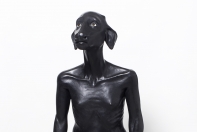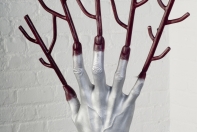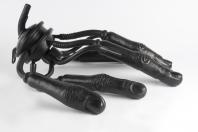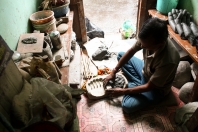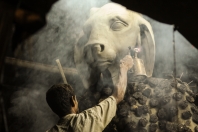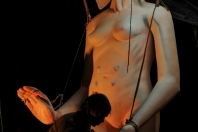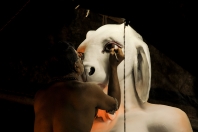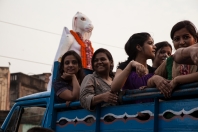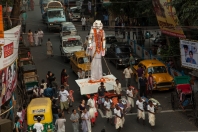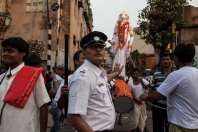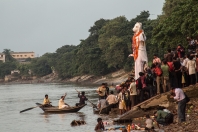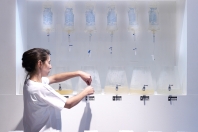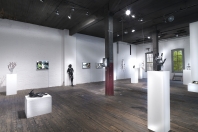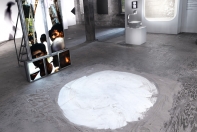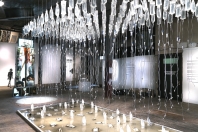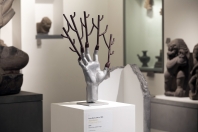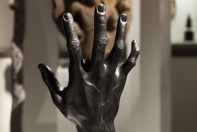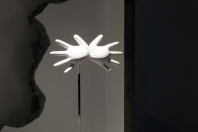Holy River
The second part of a triptych on gender selection, Holy River takes the form of a six-meter-tall hybrid sculpture made of clay from the Ganges, the sacred river. Prune asked artisans of the Kumortuli quarter of Calcutta to reinterpret her Holy Daughter on the basis of their codes. The giant sculpture joins the procession through the heart of the city on the occasion of the Durga Puja festival. In keeping with the ritual of this celebration, the sculpture is finally immersed in the waters of the Ganges, alongside other divinities.
Asia has become the most masculine continent in the world. India, in particular, indicates a continuing preference for boys in society. According to the country’s provisional 2011 Census report released in March 2011, the child sex ratio in India dropped to 914 females for every 1,000 males – the lowest since Independence. This phenomenon is partly due to the appearance in the 1980s of ultrasounds, which resulted in countless sex-selective abortions to the detriment of girls, leading ultimately to such dramatic consequences on the feminine condition as the purchase of women for marriage, abduction of girls, and an increase in rates of prostitution and polyandry.
Prune Nourry’s series of sculpture, video, and performance works, Holy Daughters, raises this issue of sex selection in India. In 2010, before the recent census results were even released, Nourry created her first set of Holy Daughters sculptures and installed them publicly in the streets of New Delhi. Hybrids between India’s sacred cows and adolescent girls, the Holy Daughters sculptures blur the line between the venerated symbol of fertility (the cow) and the culturally undesired vector of fertility (the girl).
On October 6th, Nourry, in collaboration with Calcutta Arts Club, presented Holy River, a performative sculptural event and the next installment in the Holy Daughters series, which responds specifically to this year’s census. Holy River took place during Durga Puja, the Hindu festival honoring the goddess Durga, which is traditionally celebrated in Kolkata through the creation—from the clay of the holy Ganges River—of thousands of sculptural images of the goddess and other deities, who are then adorned, processed and ultimately returned to the river from which they were born. In August of that year, Nourry commissioned a team of all-male artisans from Kolkata’s Kumartuli potters' district to create a monumental (15-foot-high) hybrid sculpture inspired by the design of her earlier Holy Daughters, yet made from Ganges clay in a traditional Durga style. The procession and immersion of the Holy River sculpture on October 6th as part of Kolkata’s Durga Puja celebrations created a dramatic and meaningful interaction between Nourry’s work and the people of India.
Holy River 2011-2012


